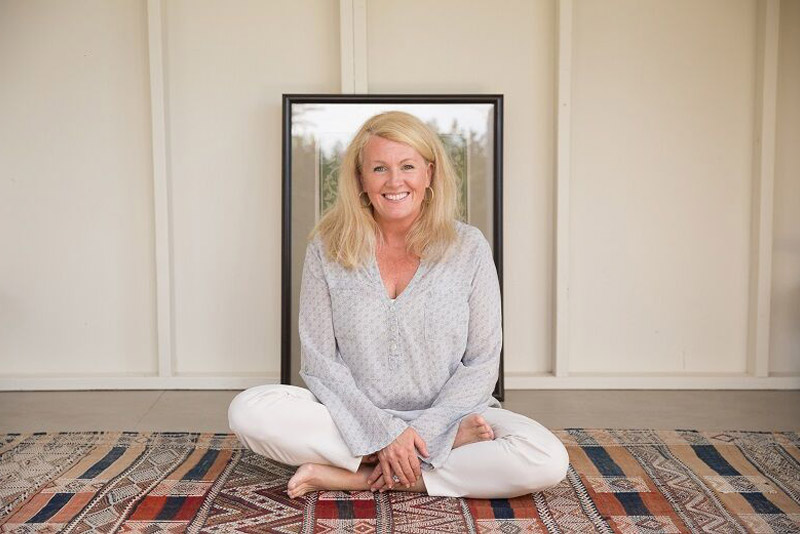Meditation. It’s Better than a Facelift

Meditation. It’s Better than a Facelift
When people ask Patricia Wheat, an award-winning facialist in Sedona, why her skin looks even better than before, she tells them, “I haven’t changed a thing, except now I meditate every day.” Women and men come to see Patricia for help maintaining their youthful skin – she’s one of the best in the business. And they depend on her to make the best facial products available to them.
In February, she learned to meditate with me. And it shows. Her clients want to know what she’s done. She says she feels better, looks better, and has even lost weight effortlessly, and she attributes it to her daily practice of meditation.
Patricia sees plenty of people who have had ‘some work done’ in her Sedona Arizona-based facial studio, About Face. Everyone wants to look and feel younger and better. Cosmetic surgery is becoming a perfectly acceptable method toward this goal. In an effort to look better, Last year alone, Americans underwent an estimated 11.7 million surgical and nonsurgical operations according to the American Society for Aesthetic Plastic Surgery.
Supposedly, when we look better, we feel better. But I don’t know if that is true. In 2006, physicians handed out an astonishing 227 million prescriptions for antidepressants in the United States! That’s up 30 million from 2002, and the number is growing rapidly. Mood elevators and antidepressants are prescribed even more often than drugs to treat high blood pressure, high cholesterol, asthma, or headaches.
But does this combo platter really work? Do surgery and medication help us to truly sustain our youthfulness and the sense of happiness and contentment that we are looking for?
Perhaps. And perhaps there is a different route to looking and feeling better. And a way to truly prevent aging. And it doesn’t involve the pharmaceutical or medical industries. Patricia Wheat knows it involves sitting still. She takes time out for a time in for herself. She leaves her clients, and unplugs from the world of stimulus for a half hour or so twice a day. She now meditates. And meditation is quickly becoming mainstream.
Like athletes or musicians, people who practice meditation can enhance their ability to concentrate – it even helps them to lower their blood pressure. But now new studies show that meditation can help people to retrain their brain so they can feel more content, and studies also show that people can create more youth hormone just by meditating. Sounds simple! It is.
Recently, a University of Wisconsin study revealed that after eight weeks of daily meditation, the brain can actually rewire itself, and the circuits that control levels of happiness can be altered. This is remarkable: it might be possible to train the brain to be better at feeling certain emotions, such as compassion.
Dr. Richard Davidson, the researcher who conducted these studies, stated, “By meditating, you can become happier, you can concentrate more effectively and you can change your brain in ways that support that.”
Neuroscientist, Dr. Sara Lazar, of Harvard University who conducts research as Mass General Hospital, used magnetic resonance imaging (MRI) to compare the brains of individuals who have meditated for years to those who have never meditated. Her research suggests that daily meditation can alter the physical structure of the brain and may even slow brain deterioration related to aging. It can even be responsible for the ways the brain responds to stress.
A lot of this research on the flexibility and the regeneration of the brain has been compiled and published by Wall Street Journal science columnist, Sharon Begley. In her book, Train Your Mind, Change Your Brain: How a New Science Reveals Our Extraordinary Potential to Transform Ourselves, Begley cites cutting-edge experiments showing that in fact new neurons and neuronal pathways can be created in the brain every day, even in people in their 70s.
This book outlines the exploration of the ways the mind can change the brain and features Tibetan Buddhist monks and their meditation practice. The forward is written by the Dalai Lama himself.
The Dalai Lama is happy to encourage participation in these research projects. He wants to promote meditation to those who are not necessarily religious, “It is the best method to deal with (negative) emotions,” he said to HDTV reporter Dan Rather in a recent interview, “Not for the next life, not for heaven, but for day to day’s well-being.”
Other research studies tout the benefits of meditation and youthfulness. In the early 80’s a published study showed meditators who had been meditating daily for at least five years were physiologically 12 years younger than their chronological age: their blood pressure was lower, their vision was better and they could hear more clearly. And those who had only just recently begun practicing meditation were physiologically five years younger than their chronological age.
Research has also proven that meditators, as they age, secrete more of the youth-related hormone DHEA than non-meditators. Women and men in their mid forties had, on average, respectively, 47% and 23% more DHEA than non-meditators – DHEA helps decrease stress, heighten memory, preserve sexual function, and control weight. Low levels of DHEA have been linked with a variety of diseases and with increased mortality.
In a related study, Dr. James W. Anderson from the University of Kentucky, said meditation has been linked to lower blood pressure, reducing the risk of heart disease, stroke, congestive heart failure and kidney failure. As a result, those who practice meditation may also be able to avoid the possible side effects of using anti-hypertension drugs.
So, what keeps people from meditating? First, it is rarely prescribed by a physician, though with the research findings popularized, that might change. Second, people don’t really understand it. They are concerned they might have to become a Buddhist or Hindu, or change what they eat or what they wear. When in fact, all they have to do is set aside a little time each day to sit still, in silence, with their focus inward.
There are many different variations of silent meditation, but the approach is similar: in order to meditate, one must sit still and bring his or her attention and focus to an object of meditation. This can differ – the focus can be on a certain sound, your breath, a feeling such as compassion, a thought, a word, an image of a saint or deity, or even a candle flame. It is a habit that must be cultivated, and as we train the mind to focus, we can literally change the brain and in turn the body. Sounds simple? It is.
Sarah McLean
Sarah McLean is an acclaimed teacher and thought leader who is determined to create more peace on this planet by helping people wake up to the wonder and beauty of their lives and the world around them through the practices of meditation and mindfulness. She inspires audiences everywhere blending the spirit of Zen wisdom with Vedic knowledge and self-inquiry. She helps demystify meditation and makes it accessible to anyone. It was over 30 years ago when she began her daily meditation practice, and moved in to a Transcendental Meditation community. There, she received advanced training in meditation and studied Ayurveda. Since 1993, when she became the education director for Deepak Chopra’s Center for Mind Body Health, she's been teaching contemplative practices and mind/body health. In 1997, she went to India to live in a traditional ashram in India, When she returned to the States, spent two years as a resident trainee in a Zen Buddhist monastery. She fell in love with Self-inquiry and served as the director of Byron Katie's School for the Work. In 2012, she founded the McLean Meditation Institute, home of the Meditation Teacher Academy which certifies meditation and mindfulness teachers through its 300-hour teacher training program. Her bestseller, Soul-Centered: Transform Your Life in 8 Weeks with Meditation, and her most recent book, The Power of Attention: Awakening to Love have received rave reviews. She now lives in Santa Barbara, California where she trains meditation teachers and offers online classes and lives a life she loves.






